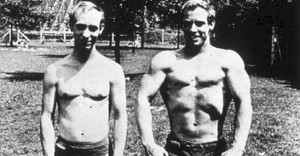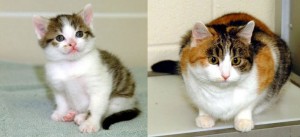Imagine that cloning oneself could produce an exact replica. The clone would be the same age, have the same mind, and even the same scar that he received as a kid. Many people wish cloning worked this way because they could then be in two places at once and double their productivity rate. In addition, as long as both the person and the clone were treated as individuals this useful procedure seems ethical because the person wants to be cloned, and since the clone has an identical reasoning pattern, the clone would also consent to being a clone. Unfortunately, cloning does not work this way, and the clone would in reality be a completely different individual with identical DNA to the original person.
In his essay “Why We Should Ban the Cloning of Humans: The Wisdom of Repugnance” Leon Kass lists many uses of human cloning. Two of these uses include “’replacing’ a beloved spouse or child who is dying or has died” and “replicating individuals of great genius, talent or beauty” (Holland 34). Like the scenario discussed earlier, these two circumstances are completely impossible because cloning does not duplicate a person. Even identical twins, which are actually clones of each other, are completely different individuals altogether. According to Tina Hesman Saey, “by birth, genetic doubles use their DNA differently…by regulating the activity of certain genes, they can profoundly influence how the DNA blueprint is used to create and operate a living organism.” (sciencenews.org). Hence, the clone may not look the same or have the same physical capacities of the original person due to these epigenetic differences. For instance, check out these clones (identical twins), Otto and Ewald:

Moreover, underlying diseases that were completely shut off or mild could become severe in the cloned individual. If the clone is living a miserable existence due to a diseased state, then this raises even more ethical questions concerning the cloning process.
Furthermore, in the case of cloning females, there is a chance that they could express entirely different genes. This was made evident in the case where a calico cat named Rainbow was cloned, but the CC (carbon copy), the clone, had a completely different fur color. This is because fur color is partially determined by genes that reside on the X chromosome. Female mammals have two X chromosomes, but only one is activated in each cell. The activation pattern varies amongst cells. When CC was cloned, her cells did not adopt the activation pattern of Rainbow. “Rainbow and CC are living proof that a clone will not look exactly like the donor of its genetic material” (Genetic Science Learning Center).

Even if epigenetics did not play a role in development, the environment would drastically effect the clone’s development. The clone cannot undergo every single nurturing experience of the original person; hence, they cannot develop an identical mindset, personality, talent, or desires of the original person. The clone would develop into an individual that may not want to have the pressures of living up to the potential of someone else.
Subsequently, it is highly implausible to “replace” a lost family member or friend as well as to “replicate” a celebrity (or rather their talent). Doing so requires duplicating a person’s nature and nurturing exactly. In any matter, this subjects one to appreciate and enjoy, instead of taking for granted, the rare gift that is human life. Additionally, it allows the introduction of new skills into society and/or the creation of a legacy of person who has passed away.
Sources:
Genetic Science Learning Center. “Why Clone?.” Learn.Genetics 26 January 2014 http://learn.genetics.utah.edu/content/cloning/whyclone/
Kass, Leon R. “Why We Should Ban the Cloning of Humans: The Wisdom of Repugnance.” Arguing About Bioethics. Ed. Stephen Holland. New York: Routledge, 2012. 130-48. Print.
Lloyd, Sam. “Check out Identical Twins Otto and Ewald.” The Sam Effect. Inbound Marketing, n.d. Web. 27 Jan. 2014. http://thesameffect.com/check-out-identical-twins-otto-and-ewald/.
Saey, Tina Hesman. “Study Shows Where Identical Twins Part Ways.” Science News. Society for Science & the Public, 17 July 2012. Web. 26 Jan. 2014. https://www.sciencenews.org/article/study-shows-where-identical-twins-part-ways
I agree with your perspective of cloning in terms of how the environment plays a key part in developing who we are in terms of personality, beliefs, and our outlook on life. I think that our genome is the initial determination of who we are, but the way we are raised, the environment that we live in, and the events that transpire (aka “nurture”) give rise to the full expression of one’s genome. Thus, it would make sense that identical twins (who could be called clones) have similar habits and traits, but they are still two different individuals. Furthermore, their personalities could vary extremely if one twin was to be in a car accident and the other was not…..A side note, many twins feel a strong psychic connection. I wonder if this could happen with cloning as well
I completely agree with your argument, there is no way that I clone would be an exact carbon copy of its donor. From what I can tell DNA for clones come from adult cells which are already “programmed” for a specific life course. However, environment plays a large role in how our genes are expressed. A perfect example of this is Dolly the sheep. Dolly’s DNA came from a 6-year-old ewe that seemed to be in good health, unfortunately there’s not a lot of available information on the health of Dolly’s donor. Unlike many sheep, Dolly only lived until the age of 6. Researchers decided to euthanize Dolly due to her suffering arthritis and having lung cancer. Researchers hypothesized that Dolly was experiencing symptoms that are usually associated with old age due to the shortening of her chromosomes. Unless there was a way to clone an infant, I don’t think there is any real way to make identical individuals unless it naturally occurs.
Sources:
http://www.animalresearch.info/en/medical-advances/151/cloning-dolly-the-sheep/
http://askabiologist.asu.edu/content/story-dolly
think your first paragraph hits on a very common misconception in our culture. Many people do hear “cloning” and imagine a person exactly the same as them being created and walking around on at the same time as them. Many people don’t realize that while clones share the majority of their genome, that does not mean that they will grow up to be the exact same person. The point you made about identical twins is great.. many twins are completely different from each other although they share the same genes. I think we all need to remember this when people try to use the argument that clones will be used to replace loved ones, or ensure that one lives on beyond death, as this is impossible under these circumstances.
I also completely agree with this argument. I have never been a supporter of the idea that a loved one can be replicated through a cloning procedure. Life is valuable and deserves appreciation, and cloning diminishes the concepts of individuality and cherishing life. Nurture definitely plays a huge role in who one is as a person; nature is simply the physical part. A true “clone” would have to have the same upbringings, thoughts and life experiences, which as stated is physically impossible. Similarly stated by Morales in Journal of Evolution and Technology, “The creation of genetically identical individual/s will never lead to the replication of the donor’s experiences. In addition, human experiences are not independent of space and time, and, since every human clone, or multiple clones, of an individual will be born in a unique context, cloned human beings’ experiences will be unique in each case. Therefore, cloned individuals will be able to develop their own identities, their own personalities, and the uniqueness of any other human being” (Morales). Evidently no two beings can have the exact same life experiences(nurture), and the cat example in the argument was a perfect representation of how the nature aspect can be slightly different in a female clone as well. So as a whole, a clone is clearly not a doppelgänger and it is seemingly impossible to have one.
This is an interesting blog because I think it brings up a point that could be used to argue for or against the banning of human cloning, depending on how you deliver it. In your blog you seem to focus largely on the problem that people can or do misunderstand what cloning actually is, and that cloning actually produces an individual who can express himself/herself autonomously. Couldn’t we use the fact that cloning does actually produces individuals as a reason why we should not ban human cloning? Kass himself actually mentions that “cloning creates serious issues of identity and individuality” (140). He also claims that the clone will indeed have the same physical appearance as their clone. However, you have argued that the clone will indeed have a sense of individuality and may not actually have the same physical appearance of the original person. Since this seems to rival what Kass actually says, I think this argument can go both ways.
I have to agree with Jamila’s take on this topic. While I understand and agree that a clone, as is any individual, is a product of an environment I believe this argument can be used both ways. It more brings into question the specific purpose of creating a clone. If we are creating a clone to “replace a loved one” (which raises large ethical concerns in my opinion), but the clone will not be the same, what is the point? If we are not looking to create an exact copy but rather just produce a genetic copy, well doesn’t that also undermine the purpose of creating a clone?
I wonder then if we are arguing for cloning, understanding that the clone will be quite different from the “original” – what is the point of cloning to begin with? For research purposes, completed far before a child is born, I completely see the benefit. But i if the argument is that a clone will be quite different then the intended copy, what is the end goal of creating the clone in the first place? If all of these points are true, why spend the money and the time to create the clone?
Adding to that, there are also a lot of fake products on the
market that have can and do have harmful ingredients
that are not checked and verified by the USFDA
and USDHHS. For those of us that use our hands constantly throughout the day,
vitamin supplements can help give our nails that added strength.
This is where cosmetics and beauty products can be of great help.
Greetings from Idaho! I’m bored to tears at work so I decided to check out your website on my iphone during lunch break. I enjoy the info you provide here and can’t wait to take a look when I get home. I’m shocked at how fast your blog loaded on my phone .. I’m not even using WIFI, just 3G .. Anyways, very good site!
Your style is very unique in comparison to other people I have read stuff from. Thanks for posting when you have the opportunity, Guess I will just bookmark this site.
It has the ability to keep skin hydrated, replace collagen and elastin which in turn reduces the odds of skin damage.
Hips oils are possibly one of the most effective natural products on the market for use in beauty and
cosmetic applications. This oil can be found in many products such as creams and
lotion as well as in a form of essential oils that are
good for massaging and only a small amount is necessary
to get enormous results.
thanks for information this is very good
thanks for this post
very nice post
thank you